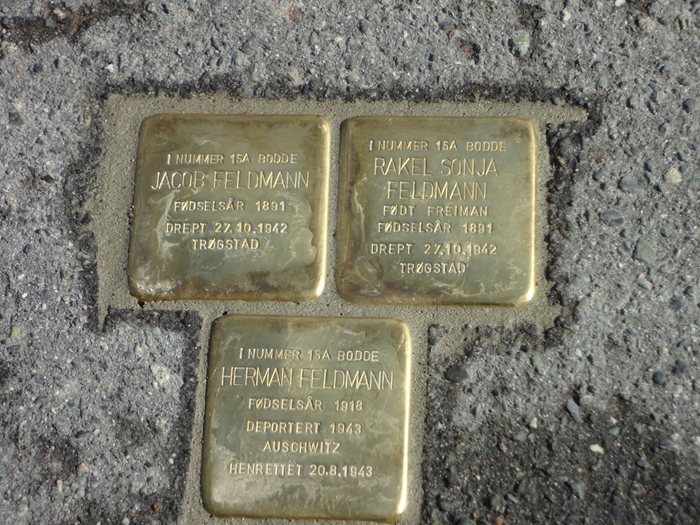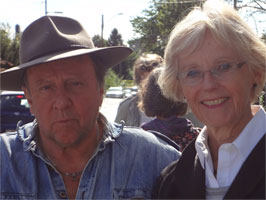Memorials to Norway’s Holocaust Victims
by Nina Brambani Smith

Although it has been almost 70 years since it ended, WWII still haunts us, as it should, lest we forget or minimize what happened to the millions and millions who were tortured and murdered by the gruesome regimes of Stalin and Hitler. Millions of survivors and descendants – descendants like me – born in Europe after the war ended, have lived to grow up with strong personal reminders of the horrors inflicted on our fellow human beings.My father, uncle and grandmother were all arrested and sent to Nazi concentration camps for years. Although they survived – most likely, as my dad said, because they were neither Jewish nor Russian, but Norwegian – three of their friends and neighbors on the quiet street in our suburb of Oslo, were not so lucky. They were Jews.
In October, 1942, Jacob and Rakel Feldmann and their 24-year old son Herman, my father’s friend, were forced by the Nazis to leave their modest two-story wooden house and the yard with apple trees and flower beds, which they had bought 15 years earlier. And they were all three subsequently murdered.
But their memories live on in front of their house. Recently the Feldmans were each honored with a unique memorial. Through the work of German artist Gunter Demnig, these simple cobblestone memorials to some of the Jews who were massacred can be found in a number of European cities.


Demnig first began his “stumble stones” project about 20 years ago. Today there are more than 36,000 of these brass covered cobblestones which you may accidentally come upon while walking in a European city. They form a chilling but much needed reminder of what happened to the Jewish people some 70 years ago.
In Norway there are currently 65 “stumble stones” paved into the street directly in front of a house from which inhabitants were taken to their death. Each stone is inscribed by the artist with the name, date of birth and the year of death of the murder victims.
The crowd attending the moving ceremony included leaders of the Jewish community, a cantor who contributed to the dignified atmosphere, several reporters, representatives of the local historical society, neighbors, and also a class of 10th graders from a neighborhood high school. Many 10th graders throughout Norway take a class trip to Auschwitz, Poland for an indelible lesson about Nazi atrocities.
The simple yet noble idea behind Gunter Demnig’s project is a symbolic way to bring victims of the Holocaust back to their homes. Sadly, the artist has not yet secured permission for his project from all European countries. For instance, neither France nor Denmark has thus far said “yes” to his “stumble stones”.
In Norway today there are about 1,500 Jews. Sidsel Levin, who participated in the ceremony as Director of the Jewish Museum in Oslo, said that the history of Jews in Norway can be called a successful integration, even though some Jews still encounter prejudice and pressure whenever something happens in the Middle East.![]()
American Diplomacy is the Publication of Origin for this work. Permission to republish is freely granted with credit and a link back to American Diplomacy.

Nina Brambani Smith has taught Norwegian at FSI and other language schools in the Washington, DC area for more than 20 years. She is also a Foreign Service spouse who met her husband while he was DCM in Oslo, and later accompanied him to his assignment as Ambassador to Lithuania. She lives in Virginia.
